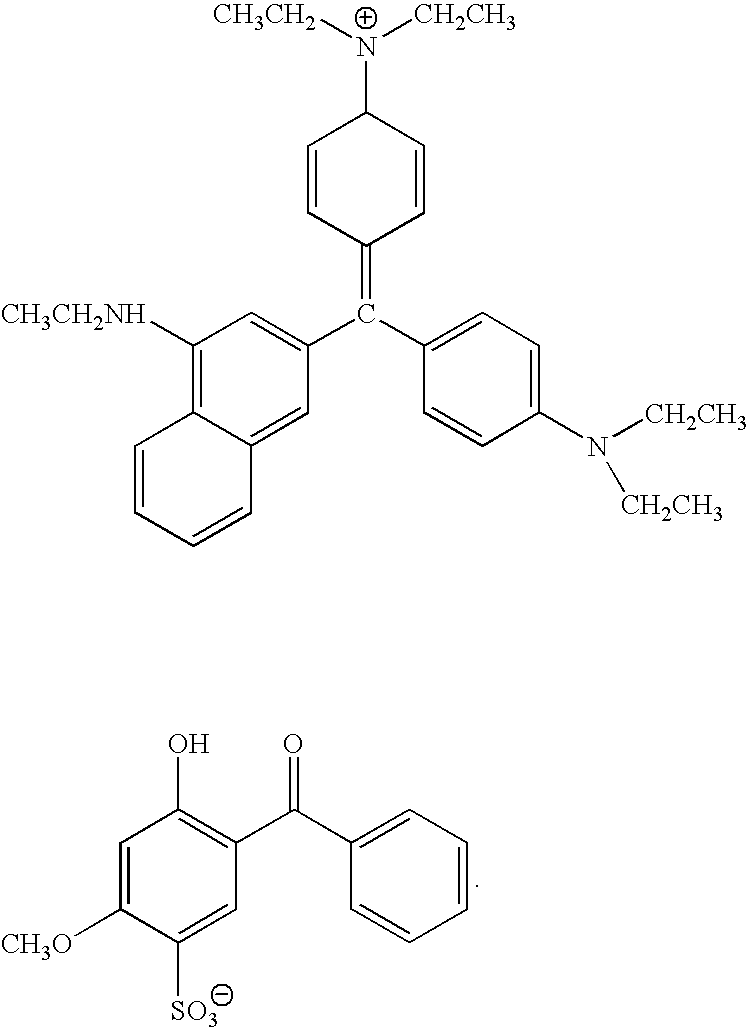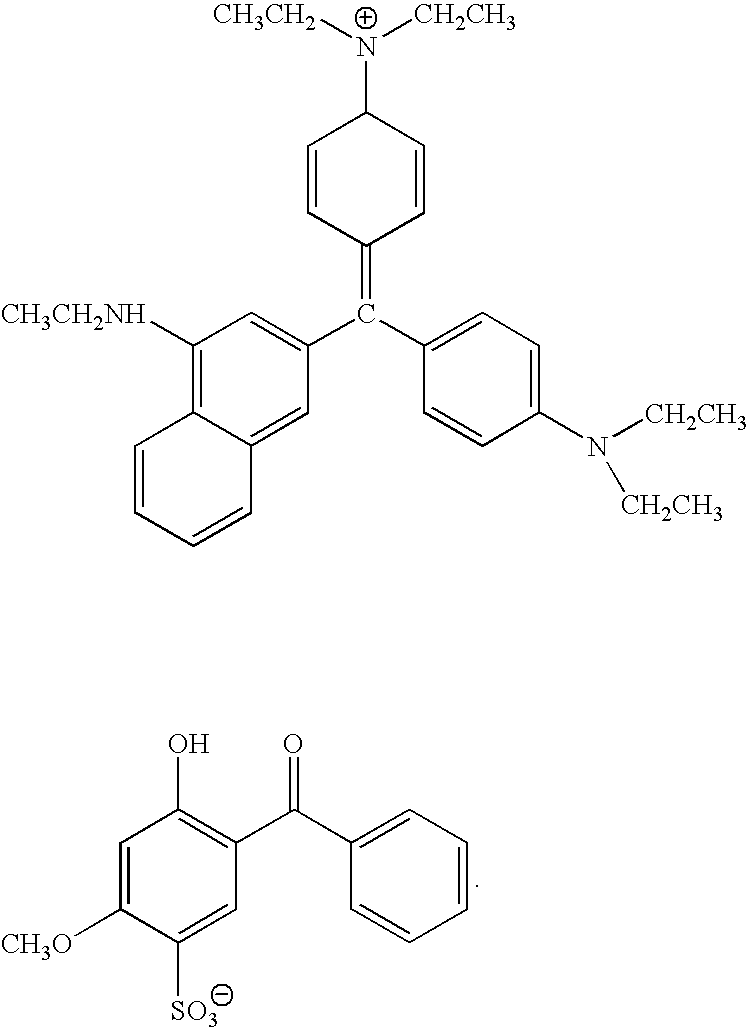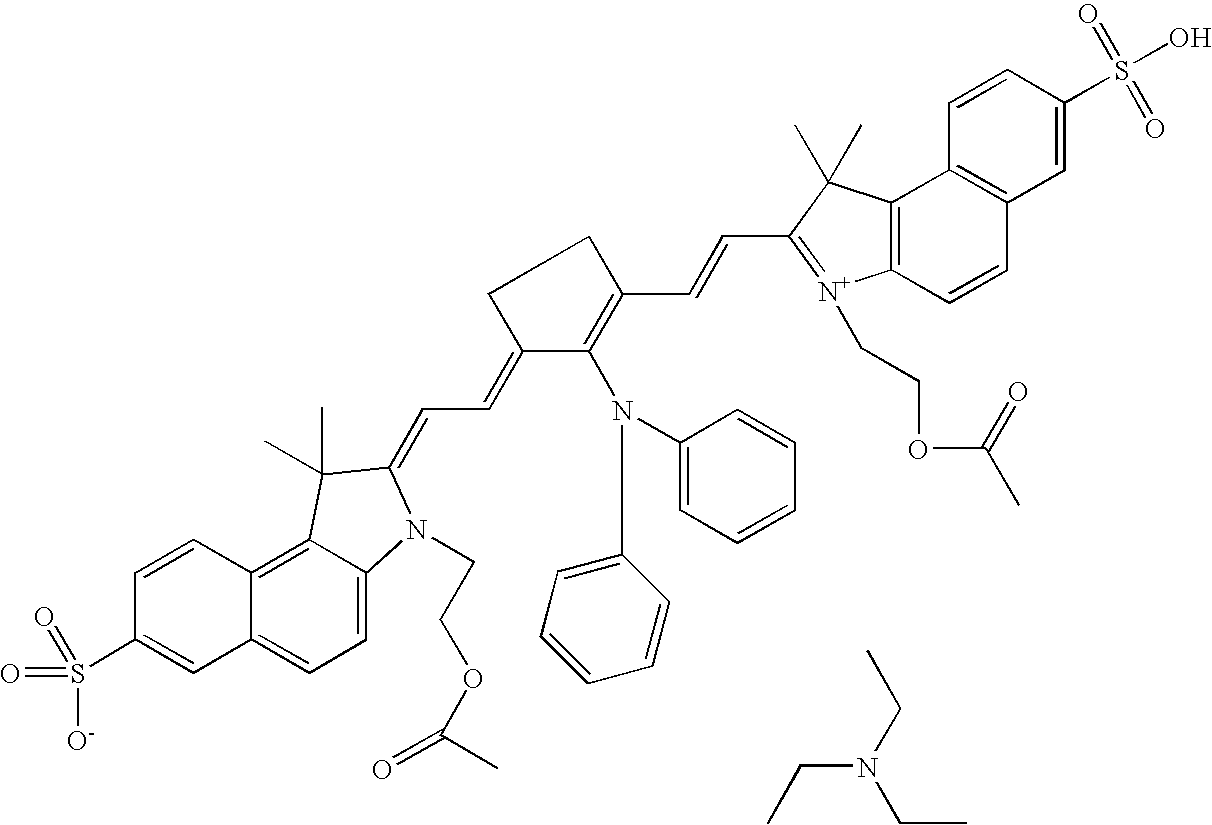Water-developable infrared-sensitive printing plate
a technology of infrared-sensitive printing plate and water-developable element, which is applied in the field of imageable elements, can solve the problems of difficult formulation of appropriate imageable layers for water-developable printing plate precursors, and high cost of substantial quantities of used developer
- Summary
- Abstract
- Description
- Claims
- Application Information
AI Technical Summary
Problems solved by technology
Method used
Image
Examples
example 1
Synthesis of Copolymer 1
[0124] A mixture of 15 g PEGMA, 48 g water and 192 g 1-propanol was charged into a 500-mL flask, which was heated to 80° C. In a separate beaker, 66.9 g styrene and 0.48 g VAZO-64 were mixed, and part of this solution (12 g) was added to the mixture in the flask, which became hazy within about 10 minutes. Subsequently, the remaining solution was added to the flask over a 30-min period. After 3 additional hours, the resulting polymer solution contained 25 wt.-% solid of Copolymer 1.
[0125] Particle size of the polymer was measured using a MICROTRAC UPA150 ultrafine particle size analyzer available from Microtrac (North Largo, Fla.). Molecular weight was determined using gel permeation chromatography in dimethylformamide (“DMF”). Data are shown in Table 1.
[0126] In the table, “ma” is the mean diameter of the area distribution; “mv” is the mean diameter of the volume distribution, and represents the “center of gravity” of the distribution. The calculation of m...
example 2
Synthesis of Copolymer 2
[0128] A mixture of 54 g n-propanol and 16 g deionized water was charged into a 250-mL flask, which was heated to 70° C., purged with a steady flow of N2 gas, and stirred with a mechanical stirrer. A mixture of 54 g n-propanol, 16 g deionized water, 10 g PEGMA, 6.75 g styrene, 38.25 g acrylonitrile, and 0.48 g VAZO-64 was prepared in a separate beaker and added to the 250-mL flask dropwise over a period of 30 min. About 2.5 hours later, 0.16 g VAZO-64 was added to the reaction mixture. The polymerization reaction continued for a total of 19 hours. The resulting polymer solution contained 24 wt.-% solid of Copolymer 2.
Preparation of Printing Plate Precursors and Printing Plates
examples 3-6
Printing Plates Prepared using Copolymer I
[0129] Coating compositions were prepared according to the formulations shown in Table 2. For Example 3, the Contrast Dye is Basonyl Violet 610. For Example 4, the Contrast Dye is Eosin B. For Example 5, the Contrast Dye is D11. For Example 6, the Contrast Dye is Quinaldine Red.
[0130] Each coating composition was applied to a brush-grained and phosphoric acid-anodized aluminum substrate that had been post-treated with poly(acrylic acid) (“PAA”). The coating composition was applied using a wire-wound rod and then dried for approximately 60 sec in a Ranar conveyor oven set at 94° C., to yield a printing plate precursor. The dry coating weight obtained was 1.0 g / m2.
TABLE 2Formulation for coating compositions used in Examples 3-6.ComponentParts by WeightUrethane Acrylate2.20SARTOMER 3550.22Copolymer 117.56IRGACURE 2500.28IR Dye A0.04Mercapto-3-triazole0.12Contrast Dye20.01BYK 3360.60KLUCEL M4.41n-Propanol71.13Water13.62
1Copolymer 1 as used i...
PUM
| Property | Measurement | Unit |
|---|---|---|
| diameter | aaaaa | aaaaa |
| diameter | aaaaa | aaaaa |
| temperature | aaaaa | aaaaa |
Abstract
Description
Claims
Application Information
 Login to View More
Login to View More - R&D
- Intellectual Property
- Life Sciences
- Materials
- Tech Scout
- Unparalleled Data Quality
- Higher Quality Content
- 60% Fewer Hallucinations
Browse by: Latest US Patents, China's latest patents, Technical Efficacy Thesaurus, Application Domain, Technology Topic, Popular Technical Reports.
© 2025 PatSnap. All rights reserved.Legal|Privacy policy|Modern Slavery Act Transparency Statement|Sitemap|About US| Contact US: help@patsnap.com



